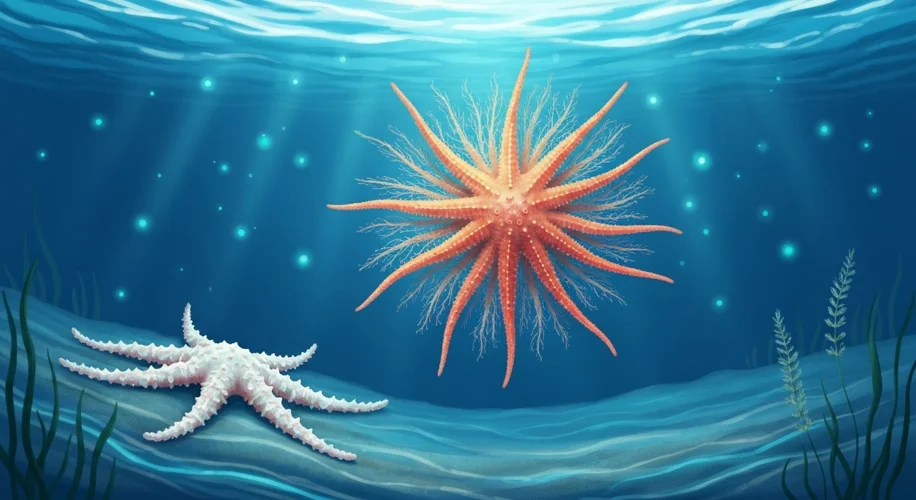It’s hard to imagine an ocean without the vibrant, intricate beauty of sea stars. But for years, a devastating mystery has plagued marine ecosystems: what caused the deaths of over 5 billion of these fascinating creatures? Today, I want to share some incredible news from the world of science that finally sheds light on this ecological tragedy.
A Devastating Phenomenon
Starting around 2013, scientists noticed something terribly wrong. Sea stars, also known as starfish, began to wither, lose their limbs, and die at an alarming rate across vast stretches of the Pacific Ocean. This wasn’t just a local issue; it was a widespread crisis, impacting populations from Alaska down to Mexico. The sheer scale was staggering – we’re talking about billions of lives lost. This event, called Sea Star Wasting Syndrome (SSWS), left scientists baffled and deeply concerned about the health of our oceans.
Identifying the Culprit
For a long time, the exact cause remained elusive. Many factors were suspected, including environmental changes, pollution, and other pathogens. However, recent groundbreaking research, published on Phys.org, has finally pinpointed the specific culprit. Scientists have identified a single-celled organism, a type of marine protist called a densovirus (specifically, the Sea Star Associated Densovirus or “SSAD”), as the primary cause of SSWS.
This virus invades the sea star’s tissues, causing lesions, muscle loss, and ultimately, the disintegration of their bodies. Think of it like a highly aggressive flu that attacks the very structure of the animal.
Why This Matters
Solving this mystery is more than just satisfying scientific curiosity. Sea stars play a crucial role in their environments. As keystone species, they help maintain the balance of tide pools and kelp forests by controlling populations of mussels and other invertebrates. When sea stars disappear, the entire ecosystem can be thrown out of balance, leading to a cascade of negative effects.
Understanding that a virus is the main driver has significant implications for how we approach marine conservation. It helps researchers develop strategies to monitor and potentially mitigate the spread of the virus, especially as ocean conditions change. It also highlights how interconnected marine life is and how vulnerable even seemingly robust species can be to specific pathogens, particularly in a warming ocean.
Looking Ahead
This discovery is a testament to the perseverance of scientists dedicated to understanding and protecting our planet’s biodiversity. It reminds us that even the most complex ecological puzzles can be solved with rigorous research and collaboration. While the loss of so many sea stars is a somber event, knowing the cause allows us to better protect the precious marine life that still thrives. It’s a hopeful step forward in understanding and safeguarding the health of our oceans for generations to come.
Isn’t it amazing how much we’re still learning about the natural world around us?

